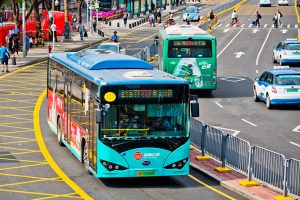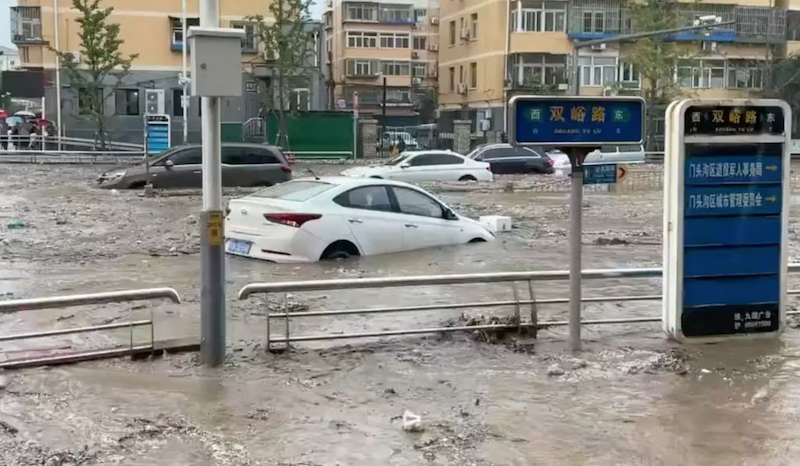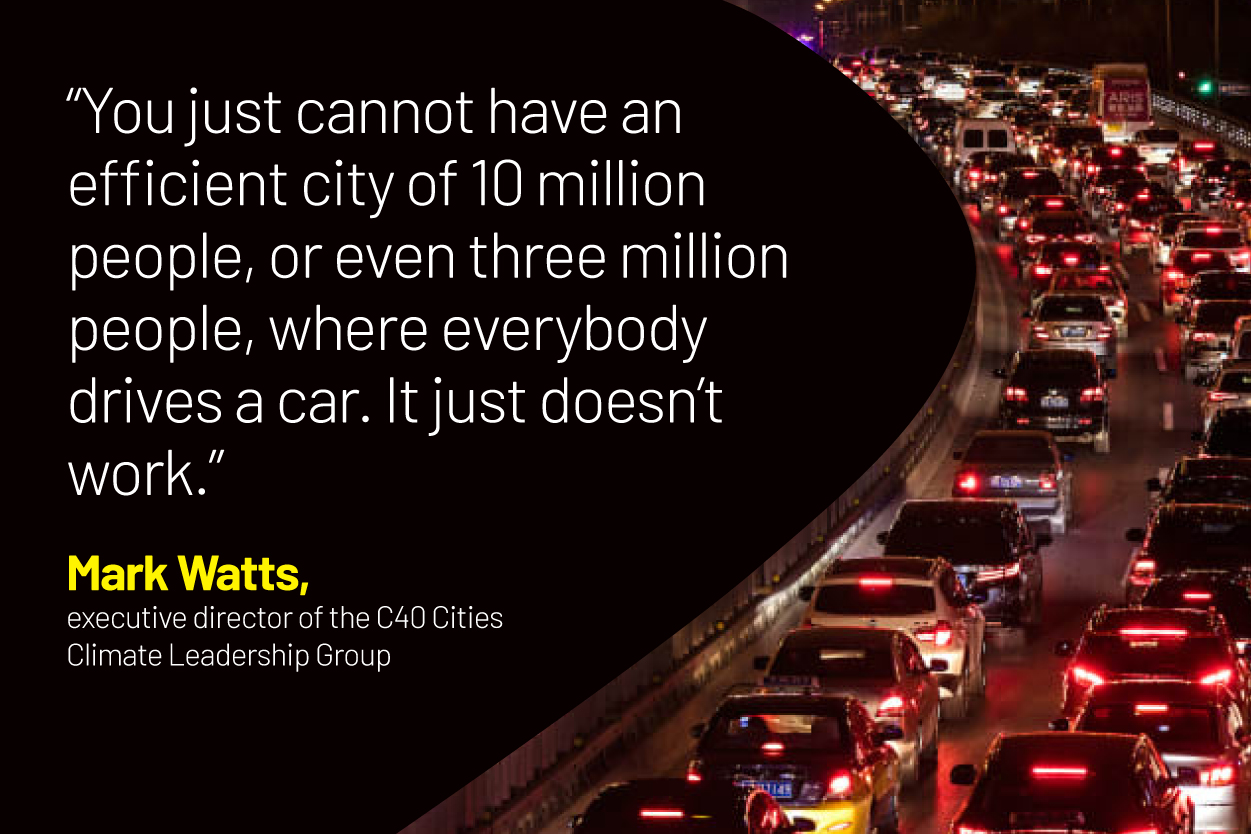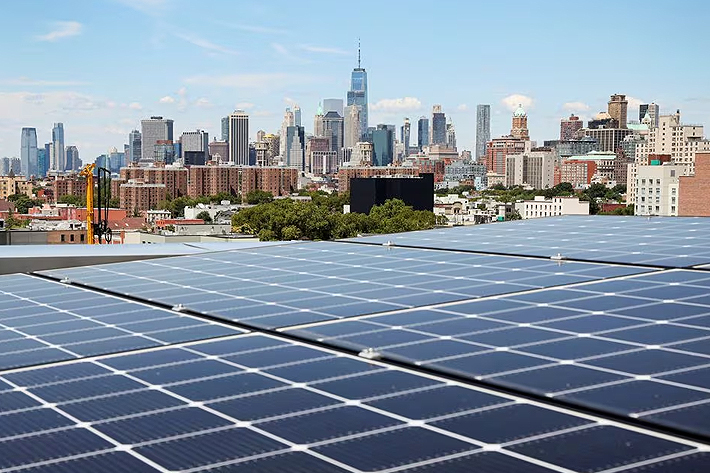A conversation with Mark Watts, executive director of the C40 Cities Climate Leadership Group, gives a glimpse of the future and the changes coming to countries across the world.
The 2020s will be a decade of rapid change driven by the drastic need to counter intensifying global warming. The responses by mayors leading the world’s biggest cities show a pattern likely to be replicated in all regions.
The goal to slash global emissions has already caused dramatic transitions in energy and transport – a shift to electric buses and cars, plus an enormous ramp-up of ‘clean energy’.
Cities leading the charge are restricting the use of cars in key areas, expanding mass transit systems, creating more pedestrian malls and greater green spaces. They are also enforcing a rejig of new and existing buildings, while moving to set up ‘green ports’ and shipping corridors.
Also on AF: Cities Lead COP28 Climate Change Push as Nations Fail to Deliver
China leading the EV, renewables charge
Watts says there has been “dramatic change” in cities in China, particularly in how they deal with air pollution. And they are roaring ahead on the shift to renewables.
Speaking ahead of the COP28 climate summit in the UAE, he said Beijing had halved its air pollution from the worst in the world in eight years. Some cities struggled to get a few hundred electric buses on the roads but in Guangzhou, which he just visited, they had swapped over 8,000 fossil-fuel buses in one year for full EVs.

“There is nothing like it in the rest of the world – that speed of change.”
Shenzhen has had 13,000 fully electric buses since 2017, which was the best in China, while the best in Europe was probably London, with 3,000. In the US, there was nothing of that scale, but Latin America was getting closer. The next fully electric bus fleet was likely to be in Bogota, Colombia, in a year or two, Watts said.
“Chinese cities are four or five years ahead on renewable energy,” he said, noting that over the past 10 to 15 years China had focused on quantity, but they were now focused on quality and ‘people-centred development’. Highways in Shanghai were lined with greenery and “the streets are as clean as Singapore”.
Mumbai, India’s business capital, had a “dynamic” leader who was moving to expand green space and electrify its bus fleet. Watts felt it could be a “big success story.”
“Overall, C40 cities have cut their [air] pollution by 5% in the past few years – doesn’t sound very much, but that’s about the level of reduction the world needs to achieve every year to stay under 1.5C.” Global emissions were still rising but in many big cities they were going down, he said.
‘Sponge’ cities fighting sudden floods
Given the focus on countering CO2 emissions, planners have been keen to expand green areas – “the lungs” of all cities, as Watts calls them. They have also been considering ‘sponge’ features for cities at risk of flooding or from rising seas, like Jakarta and many Asian metropolises.
The industrialised coastal province of Jiangsu was ranked the world’s most vulnerable territory early this year, while Guangzhou was rated ‘the most economically vulnerable city in the world’ to sea level rise by 2050”, by climate risk specialists XDI.

Watts noted a shift in thinking in cities likely to be hit hard by climate change, saying there was now less talk of building sea walls to manage rising sea levels that would cost billions “to creating the capacity to cope with much larger volumes of water”. Low-lying coastal land could become wetlands or public space where trees or mangroves could help absorb carbon and large amounts of water.
Planners in Guangzhou and Shanghai were looking at ways to make hard infrastructure more porous, he said. Places like Rotterdam, the Dutch city that is largely below sea level, and Wuhan, near the junction of the Yangtze and Han rivers, were the best examples of ‘sponge’ cities, Watts said.
Massive reservoirs had been built under the streets in Rotterdam and Wuhan “and sometimes this infrastructure can be multi-purpose – so, you have underground carparks.” With sophisticated flood warning technology, these could be “a carpark for 363 days of the year, but for two days when you have extreme flooding, the cars are evacuated and it just fills up with water”.
There were also children’s playgrounds in both cities “designed in a little bowl shape… to fill up with water when needed. It just gives the drainage system the capacity to cope. And that’s what we’re seeing with climate change – certainly in places like Bangkok, Jakarta, but New York and London as well.”
The main risk was sudden floods – heavy rain, or a high tide when there was a typhoon, that sends in massive volumes of water.

Another concern was the level of plastic finding its way to the ocean. “Over half of all the plastic in the oceans gets into the oceans in Southeast Asia, and Asia more broadly. A chunk of our cities have banned plastic bags, or put a very high price on them,” he said, adding that Quezon in Manila and Hong Kong had just taken such action.
“It’s been done extensively in the US and Europe in recent years, and in all cases to no ill-effect. It didn’t harm businesses, as people don’t stop buying things because they have to pay a few pence for a plastic bag. But it makes a dramatic difference to the health of the waterways. Jakarta, apart from all the problems they have, just the amount of plastic they have in their drains – it’s stopping the water runoff.”
Retro-fitting: Swapping gas boilers for heat pumps
Countries in the northern hemisphere have done well in redesigning buildings to make them more energy efficient – retro-fitting so they “stay cool in summer, warm in winter, but changing the energy source”. Over a million homes had switched to solar panels since the Covid pandemic, said Watts.
All public buildings in Seoul, in South Korea, had undergone a retro-fit to reduce their energy demand by 20-30%, he said, shifting from coal to air-source heat pumps driven by clean electricity. In Europe and North America, cities have been imposing regulations so building managers install air-source heat pumps instead of gas boilers.
Watts said heat pumps were three to five times more energy efficient and cheaper to run. They reduced demand for gas also created more jobs, he added. But, he warned, gas firms were spending millions “to fight regulations by cities which say new buildings should only connect to renewable energy, and should have air-source heat pumps, not gas buildings.”
However, the “big challenge” long-term, he said, was switching to clean construction materials by not using “ultra-high carbon” products such as concrete [cement] and steel.
Renewables cheaper and offer ‘far more jobs’
Meanwhile, the switch to clean energy has become easier, the climate campaigner went on. “Almost everywhere in the world now it’s cheaper to install solar and wind than it is to install gas, coal or oil. And that shift has happened in the last two or three years. So, the economics are good.”

And there were many more jobs in installing renewable energy and changing to green buildings, Watts argued. “Our estimate is six times as many jobs if you try and meet energy demand through renewable energy and retro-fitting buildings to make them efficient, compared to meeting the same energy demands with a new gas power electric system.”
With extreme weather events becoming more frequent, cities and the people who live in them have to be flexible, he said, including how they move around. “You just cannot have an efficient city of 10 million people, or even three million people, where everybody drives a car. It just doesn’t work. It doesn’t matter whether it’s electrical or petrol, it doesn’t work.”
Cheap, clean mass transit systems were a centrepiece of sustainable cities, he said. And China was giving glimpses of what the future would look like. When he first visited in 2006, Shanghai was finishing its second metro line. “When I was there five years ago, they had 10. Now they have 17 and there’s another 10 under construction.”
Green shipping corridors and ports
Another new feature is “green ports.” Los Angeles, Long Beach and Singapore have both agreed to implement ‘green shipping lanes’ similar to Shanghai, and Melbourne, which has been looking at hydrogen tankers sending cargo to ports in Japan, appears set to do the same.
“The only way the Maersk’s and the Cosco’s are gonna invest the extraordinary sums of capital for their container ships to turn them on to green methanol [or other clean energy], is to accommodate them at green ports. Ports can regulate to say only some vessels can plug in, so that’s what Shanghai has done, and LA is doing – to say, we’re not gonna have any diesel engines running when ships are in port.”
But they had to upgrade to be able to provide the power needed. Cities could do this, as they often owned the port or could regulate it.
Watts, who will attend COP28 for the entire two weeks, said Dubai was the first climate summit to include cities in a formal way.
“Our calculation is somewhere between a quarter and a third of all national commitments are being done at the city level. So, you could increase the ambition in the other 70% just by looking at what’s already happening.” They want governments to empower cities more, to help successful policies be implemented on a wider scale.
“Without action at the urban level we will not be able to limit global heating to 1.5C. There are many reasons why cities make effective climate leaders, including their capacity to collaborate and the role they play in incubating innovative ideas.”
- By Jim Pollard
Read more:
COP28: France, US to Seek Ban on Private Funds for Coal Plants
Global Subsidies For Oil, Gas and Coal Now Reach $7 Trillion: IMF
Fossil Fuel Phase-Out ‘Unrealistic’, China Climate Chief Warns
China Adds Himalaya Peak Weather Station Amid Climate Concerns
India, China Pushing For ‘Multiple Pathways’ to Net Zero
























